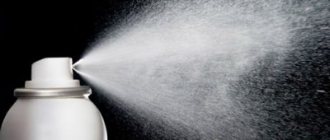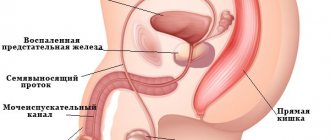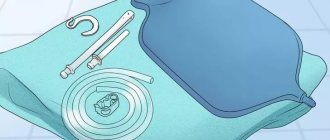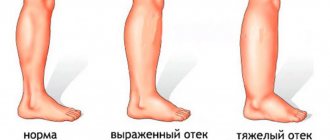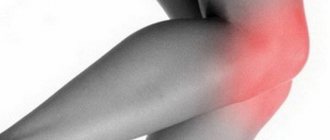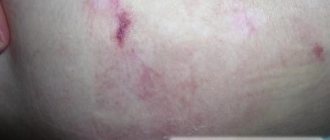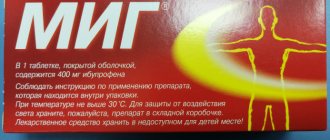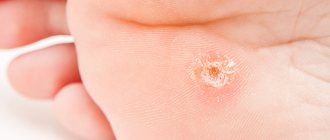Causes of cracked heels. What causes cracked heels?
Cracked heels are a common problem for people of all ages. They are mainly caused by lack of moisture. If the epidermis on the heels does not receive sufficient moisture, then very soon microcracks appear on it, which subsequently become more serious and begin to cause discomfort.
The causes of cracked heels are varied and include:
- Regular and long-term walking or standing;
- Using harsh soaps that dry out the skin too much;
- Frequent hypothermia of the feet;
- Prolonged exposure to water;
- Overweight;
- Wearing shoes of the wrong size.
In addition to the reasons listed, cracked heels can provoke certain diseases and disorders of systems and organs, such as eczema, psoriasis, thyroid diseases and diabetes.
Cracked feet are unsightly and in some cases can lead to infection and severe pain. But, the problem is quite easily solved and you can get rid of unpleasant and sometimes dangerous cracks using affordable homemade products. Folk remedies often have a faster effect in treatment than medications, which, by the way, are not many on the modern market.
Prevention
In order to avoid having to treat advanced heel tears, follow a few simple rules that will protect you from an unpleasant problem:
- Moisturize your feet regularly . It is not enough to apply cream 1-2 times a week - you need to do it daily.
- Wear quality shoes . Shoes made from materials of dubious quality, and even the wrong size, cause the formation of calluses. It is lingering calluses that often cause the formation of cracks.
- Do not take a bath that is too hot and do not spend more than 20 minutes in the water . Such procedures suck moisture out of the skin, making it dry and thin.
- Use silicone shoe pads . Special orthopedic pads are glued inside the shoe at the heel location and soften the pressure when walking. The cost of inserts varies depending on the manufacturer. For example, Scholl gel pads cost about 450 rubles. for a couple.
- Exfoliate dead skin at least twice a week . Regular use of a pumice stone, grater or scrub can rid your feet of calluses and prevent them from breaking.
Regularly moisturize your skin, use specialized products, do not neglect the systematic treatment of your feet, and you can forget about skin breaks. Have you ever faced the problem of cracked heels? Tell us in the comments what helped you solve the problem!
Cracks in the skin of the heels - treatment and prevention
5 (100%) 1 vote
What to do if your heels are cracked
When cracked heels appear, the first question that arises is what to do to cure them as quickly as possible? Even qualified specialists recommend using available means for this and be sure to take vitamins orally.
Today there is a huge range of multivitamins that have a comprehensive effect on the body and help get rid of many problems, including those associated with skin defects. They are inexpensive, but at the same time they have a quick and fairly sustainable effect.
Contraindications
You should choose any remedy you like and the answer to the question of how to get rid of cracked heels at home will be received.
The above care procedures should be carried out at home with caution or eliminated altogether if:
- There is intolerance to the declared components
- There is a tendency to allergic reactions
- The cracks are deep and inflamed.
Before starting a course of restorative procedures, you should consult your doctor!
How to treat cracked heels - pharmaceutical products
Treating cracked heels is not difficult when you know which remedies really help. These products include some ready-made drugs that are sold in pharmacies.
Paraffin
Paraffin is used to remove dead cells, eliminate the effect of dry skin and effectively treat cracked heels. It can also be used as a natural emollient to maintain the properties of the skin.
Paraffin should only be used when warm. A microwave oven is perfect for heating it. After heating, you need to add a little coke oil to the paraffin, this will enhance the effect of the drug. Next you should do the following:
1.
Apply the warm mixture to the problem area, wait a few minutes and put on cotton socks;
2.
Leave overnight, then rinse thoroughly with water. If you use this remedy daily for two weeks, cracked heels will disappear without a trace.
Healing foot cream The composition of the foot creams includes walnut extract, sea buckthorn and cedar oils, plantain extract and essential oils. Healing creams should be used daily, preferably in the evening. Just after a shower you need to generously lubricate your heels with cream, and the problem will cease to be such in a few days.
The best medicines and preparations to combat cracks: creams and ointments
Balm “Doctor Biokon” is very helpful for insufficient hydration of heels. Its composition includes lactic and salicylic acids, shea butter, and calendula.
This product should be rubbed twice a day, rubbing it in a circular motion into the skin of the feet. After the procedure, it is recommended to wear plain socks.
Zorka with Floralizin is a little-known but very effective cream for the feet . This miracle remedy is intended for the udder of cattle and contains florazilin, which improves blood supply to the tissues.
The composition also includes Vaseline, which moisturizes and nourishes the skin. Together, these two components have a positive effect on the surface being treated.
“Green Pharmacy” is a foot cream with a healing effect . It includes extracts of natural components.
This is indicated in more detail in the table:
| Component | Effect |
| Plantain | Well heals tissue, excellent antiseptic |
| Fir oil | Antibacterial effect |
| Tea tree oil | Antimicrobial and antifungal action |
| Walnut | Relieves inflammation, has antibacterial properties |
This cream is effective at the early stage of the lesion.
Radevit is an effective remedy for the treatment of cracks . Contains vitamins D2, A and E. Thanks to this composition, cracks heal quickly.
Bepanten ointment is intended for the treatment of diaper rash in children and cracked nipples in women . Very effective in treating cracked heels.
The Gevol series is one of the most popular cosmetic products , including, in addition to creams and ointments, a patch for healing damage to the skin and softening it.
Levomekol is a drug that helps cure even deep injuries.
Traditional recipes for cracked heels
Cracked heels can also be treated using folk remedies. The problem of excessive dry skin on the feet has been known since ancient times. Our ancestors did not have pharmacies or ready-made medications for the treatment of cracked heels, so they resorted to all sorts of tricks to solve this issue. Therefore, now there is a huge number of folk remedies, the use of which is no less effective than the use of ready-made pharmaceutical drugs.
Foot scrub
A scrub prepared at home does an excellent job of removing rough, dead skin. Before using it, you need to steam your feet in hot water, to which it is advisable to add liquid soap or shower gel. The procedure itself looks like this:
- Before going to bed, mix a little liquid soap with warm water in the foot bath;
- Immerse your feet in soapy water and hold for 20 minutes;
- When the skin has steamed, take a pumice stone and carefully remove the rough skin on your feet with it;
- Take ordinary coarse salt and thoroughly rub your slightly dried feet;
- Rinse off the salt with warm water, wipe your feet, apply cream to your skin and put on cotton socks.
Use this remedy daily until the problem stops bothering you.
Coconut Oil Coconut oil is another incredible remedy for dry, chapped skin. It not only perfectly moisturizes the epidermis, but also perfectly fights fungal and bacterial infections. It should be used like this:
- Before going to bed, soak your feet in warm water with soap;
- Dry your feet with a towel and apply coconut oil generously to your feet;
- Rub the product thoroughly into the skin;
- Wear cotton socks and keep them on throughout the night;
- In the morning, take off your socks and remove any remaining oil.
Do this daily for several days until you are satisfied with the results.
Lemon juice
Lemon juice has a very mild natural acidic level, making it great for removing dead skin particles. Regular use will help make your skin soft and beautiful. To achieve a positive result, you need to add a little lemon juice to a bowl of clean water, immerse your feet in it and wait 10-15 minutes. After this, remove rough skin from the heels with a pumice stone, dry your feet and apply moisturizer. Repeat several times a week.
Banana Overripe bananas should not be thrown away - they make an excellent remedy for treating cracked heels. They will help soften and moisturize the skin. It is very simple to prepare the product:
- Mash one or two overripe bananas thoroughly;
- Apply the paste to your feet and leave for 20 minutes;
- Wash your feet thoroughly with warm water;
- Dry and apply nourishing cream.
This product not only softens the skin, but also relieves tired legs.
Quick help: how to heal cracked heels quickly and effectively
If you do not want to do treatment at home, then you can go to a beauty salon, where you will undergo a special procedure to remove excess skin from your heels. During this procedure, the rough skin of the dermis will be carefully removed and the edges of the wounds will be treated. It is quite possible that you will need more than one such procedure. However, even this procedure does not completely exclude home treatment. Special baths, compresses and moisturizing the skin at home are mandatory even after visiting the salon.
If you decide to do treatment at home, the procedure should look like this:
- Softening the skin with a bath or compress
- Gently removing excess skin
- Applying a healing or softening cream
You will have to repeat such manipulations several times. Don't forget to lubricate your feet with plenty of cream at night and wear cotton socks.
Rapid healing of the skin of the feet is also possible with the use of special ointments that are anti-inflammatory in nature. Such ointments are relevant if the cracks have burst and the inflammatory process has begun.
Treatment of heels with hydrogen peroxide
An excellent remedy for treating cracked heels is hydrogen peroxide. It acts on the skin of your feet like boiling water in ten minutes, steaming it as if you had spent an hour in a hot bath. The tool is used like this:
- Four liters of warm water are poured into a basin and four tablespoons of hydrogen peroxide are added;
- The legs are immersed in the basin so that the feet are completely in the water;
- After ten or fifteen minutes, we remove our legs from the pelvis and walk over problem areas with pumice;
- Rinse your feet, dry with a towel and apply a rich cream to the skin.
If you carry out this procedure at least once a week, your heels will always remain smooth and beautiful.
Treatment of heels with folk remedies
Traditional medicine has many remedies for treating severely cracked heels.
In combination with treatment of the underlying disease that caused cracked heels and proper foot care, they give excellent results. Let's look at the most effective and affordable ones.
Treatment with laundry soap
Although laundry soap does not have medicinal properties, it softens dead skin well and has a disinfecting effect on it.
The easiest way to use laundry soap is to make a soap mask overnight. Feet should be washed well, dried with a towel and lubricated the soles of the feet with a piece of 72% laundry soap. Then they put thin socks on their feet and go to bed. In the morning, moisturizer is applied to washed feet. The procedure is performed daily until the cracks are completely eliminated.
To enhance the effectiveness of soap, use black tea. A linen or cotton napkin is soaked in tea leaves, soaped and applied to the heels. Cover the feet with plastic wrap and put on socks. The morning procedure is repeated as in the previous recipe.
Ointment for cracks
Ointment for cracked heels can be purchased at a pharmacy. A product called “Radevit” does an excellent job of treating deep cracks, and also nourishes the skin, moisturizes it and eliminates related problems. Dermatitis, burns, eczema and cracks can be treated with this ointment, the cost of which is low, which cannot be said about the effect it has on all layers of the epidermis.
Treatment of heels with aspirin
Cracked heels can be treated with a simple remedy - aspirin. Acetylsalicylic acid tablets should be mixed with a glass of vodka and iodine should be added to the resulting mixture. Ten tablets and a few drops of iodine are enough to prepare a miraculous solution. You need to store the mixture in the refrigerator and lubricate problem areas with it daily. Cracks in the heels, including deep ones, can be cured in just a week.
Vinegar for cracked heels
Vinegar can also be used to treat cracked heels. The acid contained in vinegar helps soften the skin, which in turn makes exfoliation easier and helps relieve fatigue.
Mix half of one cup of white or apple cider vinegar in two glasses of water. Dampen a cotton cloth with the resulting solution and wrap it around your feet. Leave for ten to fifteen minutes, then carefully remove rough skin using a pumice stone. Rinse your feet in warm water, dry with a towel and apply nourishing cream.
Glycerin against cracked heels
Another excellent remedy for cracked heels, which can be purchased in pharmacies, is glycerin. Due to its moisturizing properties, glycerin is considered an ideal remedy for getting rid of many epidermal problems, including deep cracks in the heels. Glycerin is used as follows: 1.
Mix glycerin, lemon juice and rose water in equal proportions;
2.
The mixture is applied to the heels and left for 20 minutes.
Afterwards, its excess is removed, and the feet are washed with warm water without using soap or gel. This mask needs to be done daily for 10 days.
Baths or how to treat deep cracks in the heels
In order for the problem of dry skin on the feet to cease to be such, it is necessary to regularly take special foot baths. The simplest bath is prepared using sea salt. This natural component not only promotes the healing of deep cracks in the heels, but also has an antibacterial effect. Sea salt contains a large amount of magnesium, a mineral that is excellent at drawing out toxins through micropores. To make a healing foot bath, you need:
- Add one half cup of sea salt to a foot bath with warm water;
- Soak your feet in this solution for 10 minutes;
- Gently rub your feet with a pumice stone;
- Place your feet back in the water with sea salt for another 10 minutes;
- Remove your feet from the bath, dry thoroughly with a towel and apply a rich cream.
This healing foot bath should be done at least two to three times a week. For the fastest effect, it is recommended to use this product daily for two weeks.
Diseases of the body that cause cracked heels
Cracked heels can indicate not just dry skin, but also serious malfunctions in the functioning of the entire body. If peeling and usual hygiene do not bring results, you need to dig deeper and be examined under the supervision of specialists.
Older women most often fall into the category of those suffering from this disease, but this problem also occurs in men. Moreover, not all young people can boast of soft and smooth skin on their heels.
Diabetes
Patients with diabetes mellitus have cracks in their feet in 90% of cases. Interestingly, with this pathology, such tears in the integument do not bring pain or discomfort to a person. It's all about impaired blood circulation in the blood vessels. The vessels of the legs are mainly affected. The skin loses elasticity and becomes dehydrated. Blood cells cannot cope with the main functions: the delivery of oxygen and other nutrients. Weak blood circulation does not allow the stratum corneum to be fully moisturized; the cells simply dry out, die and rupture.
Anemia
Iron deficiency anemia is one of the top three “destroyers” of healthy heels. Lack of iron in tissues leads to serious changes in the skin. Humans need iron for the synthesis of proteins and various enzymes. The lack or absence of this substance disrupts the structure and slows down the processes of cell division. As a result, the epithelium and epidermis are not able to renew themselves as often as necessary, the skin becomes dry, begins to peel and crack.
Stomach problems
Small cracks in the heels can signal problems with the stomach, most often gastritis or ulcers. If dry heels are combined with dry corners of the lips, mouth, and heartburn, you should consult a doctor and change your diet.
Kidney diseases
At first glance, the connection between kidney function and cracked heels is not visible or completely absent. But that's not true. It's all about increased urea levels in renal failure. It interferes with normal blood circulation, leading to dryness and vulnerability of the skin.
Standing position
If a person spends the whole day in a standing position, the legs begin to swell and become very tired, blood circulation in the tissues becomes difficult, the skin is not enriched with oxygen in the required amount and begins to deteriorate.
Metabolic disease
A lack or excess of vitamins leads to metabolic disorders, and then to a deterioration in the condition of the heels. We are talking here primarily about vitamins A and E. Soft and elastic skin is an indicator of a healthy metabolism.
Fungal diseases
To prevent your heels from cracking, daily foot hygiene is not enough. It is necessary to exclude and cure fungal diseases of the skin and nails. Minimize the proliferation of pathogenic bacteria that can lead to dermatitis. You should air your feet more often and avoid excessive sweating.
Cracks in the heels indicate the vulnerability of the skin, including in relation to harmful microorganisms. Which in turn can lead to inflammation. Cracks that seem harmless at first glance conceal the prospect of serious health problems. If the question of how to get rid of cracked heels at home remains open for a long time, you should reconsider your care for the leg area and especially the feet.
What treatment should I use if my heels are dry and cracking?
1. If a fungus has been detected, then drugs based on terbinafine with antibacterial action will be appropriate. Before using it, the feet are washed in a soda solution, dried and smeared with the composition.
2. For diabetes mellitus, which can cause wounds on the heels, it is necessary to protect the skin with special ointments that have bactericidal properties.
3. For shallow cracks and dry skin, it will be sufficient to regularly carry out water procedures with a solution of baking soda and laundry soap mixed in it. The skin will become velvety and soft.
4. If the cause is parasites living in the body, it is necessary to take antiparasitic medications, undergo examinations and pass appropriate tests to identify a certain type.
5. Deficiency of vitamins and minerals. The problem is eliminated by replenishing the lack of nutrients. It is recommended to take a multivitamin complex.
Natural ointments for the treatment and prevention of cracks
After the bath, after drying the skin, you need to apply the ointment, and after it is absorbed, put on socks. To prepare the ointment, you need to use natural oils: calendula, cocoa, shea, wheat, etc., as well as bee products.
- Wax ointment.
You will need: 2 onions, one and a half glasses of vegetable oil, 100 grams of wax, a small piece of propolis. After frying the onion in vegetable oil, strain it through cheesecloth. Add wax and propolis to the oil and boil over low heat. Once the wax has completely dissolved, the mixture should simmer slowly for two minutes. Turn off the gas, pour the hot ointment into a glass jar and let it brew until it thickens. - Oil mixture.
For this ointment you will need a teaspoon of wax, the same amount of cocoa and shea butter, and one teaspoon of any of the liquid oils: sea buckthorn, calendula, rose hips or wheat. The wax must be melted in a water bath, add cocoa and shea butter, and mix. After a minute, add liquid oil and stir. Pour into a glass container and store in a dark, cool place. The ointment can also be used to lubricate both knees and elbows. - Calendula ointment.
Calendula oil is readily available and very effective. You need to lubricate your heels with it at night for two weeks, after which the skin will look healthy and smooth. - Olive ointment.
It is prepared from olive oil, which is also available and inexpensive. You need to lubricate wet heels before going to bed for 10-12 days.
Effective treatment of cracks at home
In order to begin self-treatment, it is very important to make sure that your cracked heels are not caused by a fungal infection and are not a serious dermatological disease. To do this, you need a consultation with surgeons and dermatologists, who, if necessary, will send you to a more specialized specialist - a mycologist. The main signs of these diseases are redness and swelling of the skin around the cracks, the presence of a large number of pustules or ulcers. If you suspect problems with internal organs, visit a therapist who, after listening to your complaints, will refer you to specialized specialists.
If you feel well and do not have any complications, then heel problems can be solved without medical help.
First of all, when starting self-medication, understand an important detail: you cannot use pharmaceutical medications without permission. A doctor has the right to prescribe medications, selecting the treatment regimen you need, otherwise you may worsen your situation. Therefore, we will consider traditional methods of treatment that can cure the disease and subsequently maintain the skin of the heels in normal condition.
When starting treatment, be patient. Try different methods and options, since the treatment regimen in traditional medicine is also individual: a remedy that perfectly helps one person may be ineffective for another. If the inflammation does not go away, the cracks do not heal, and treatment is unsuccessful, you need to visit a doctor.
At home
Currently, a huge number of pharmaceutical products are produced that are used to eliminate problems with the skin of the heels and heal cracks. As a rule, their action is aimed at moisturizing, relieving inflammation, itching, and other unpleasant symptoms. All pharmacological agents are very easy to use at home. The duration of treatment usually depends on how advanced the condition of the feet is.
Hydrogen peroxide
The effectiveness of this well-known remedy is due to its action. Properties of hydrogen peroxide:
- reduces the activity of pathogenic bacteria;
- removes calluses and corns;
- has antiseptic and antimicrobial effects;
- softens the skin.
How to use hydrogen peroxide for cracked heels:
- Heat 3 liters of water. Add 8 tbsp to it. l. 3 percent peroxide. Dip your feet into the resulting solution for 10-20 minutes. Then gently scrub your feet to remove any dead skin.
- Dissolve 50 g of salt and 3 tbsp in 4 liters of water. l. hydrogen peroxide 3%. Keep your feet in this bath for 15 minutes. Remove softened skin with pumice stone, treat feet with nourishing cream.
- Mix one part peroxide and five parts water. Soak a piece of cloth in the resulting mixture, apply it to the affected area and secure with an adhesive plaster. Remove after a couple of hours and remove rough particles.
Ointment
Several effective remedies to heal your skin:
- Radevit. The main components of the ointment are retinol palmitate and vitamin D. Promotes skin healing, relieves itching and inflammation. Apply a thick layer to lesions and cracks twice a day.
- Balsam. Moisturizing nourishing ointment for skin. Removes irritation. Rich in vitamins A and E, which increase the protective properties of the skin. Requires application to affected areas twice a day.
- Zazhivin. A natural ointment that accelerates the process of regeneration of epidermal cells. Heals wounds, kills bacteria. Zazhivin should be used once a day.
- Calendula. Homeopathic ointment that has a bactericidal, anti-inflammatory, wound-healing, softening, and disinfectant effect.
- Gewol. German made ointment. Well heals the skin of the heels, softens it. Contains natural ingredients.
- Zinc ointment. Effective antiseptic, heals well.
- Petrolatum. A very effective ointment that will heal cracks of any depth.
Cream
If you don't know how to get rid of cracked heels, try the following remedies:
- Doctor Biocon. It has antibacterial and antifungal properties and nourishes the skin well. Heals deep cracks, relieves feet from excessive sweating and unpleasant odor. Contains lactic and salicylic acids, oils, triclocarban. Apply to lesions twice a day.
- Super Heels. Cream containing herbal ingredients and Shostakovsky balm. Helps get rid of roughness and corns. Relieves inflammation, destroys bacteria.
- Foot cream series Green Pharmacy. Heals cracks very quickly, has anti-inflammatory and antibacterial properties. Contains walnut and tea tree oils, plantain extract.
- Ambulance. Contains vitamins. Restores skin, accelerates healing processes.
- Dardia Lipo Balm. Contains urea. Softens, restores water balance, increases elasticity.
- BioAstin is an antifungal. Helps against fungal cracks. Contains essential oils.
- Lamisil. Cream against infections and fungus. Restores the deep layers of the epidermis. Apply once a day.
In what cases is it necessary to contact specialists?
- If cracked heels cause severe pain or itch, bleed, or become inflamed. In advanced cases this often happens.
- The pain reaches the point where it becomes difficult not only to walk, but also to stand.
- Patients with diabetes, obesity, as well as vitamin deficiency, eczema, and psoriasis are unlikely to be able to completely cope with this problem on their own.
- Fungal infection. In this case, it is recommended to immediately go to the doctor. And do not try to treat yourself, so as not to spread the infection throughout the foot.
- Diligent care and treatment do not produce any results and cracks in the heels do not heal, but new ones appear.
The dermatologist will refer you for tests that will help determine the cause of their appearance. If it is some kind of internal disease, then treatment will be prescribed. In addition, he will prescribe the most effective remedies that will help heal the cracks as quickly as possible.
Baths
Cracked heels, regardless of the cause, are very diverse, but in all cases they are accompanied by severe discomfort and pain, which do not interfere with life and require prompt treatment.
In addition to medications aimed at regenerating and softening rough skin, foot baths are also good helpers. They prepare the skin of the feet for further treatment and also speed it up.
Effective recipes:
- Sea salt. Place 0.5 cups of salt in a basin of warm water and wait until it dissolves. You need to take a bath for 10 minutes, then gently rub your feet with a pumice stone and repeat the procedure. If the cracks are superficial, then you need to take a salt bath no more than 3 times a week. In another case, daily for 2 weeks;
Foot baths are a good way to prevent and treat cracked heels, regardless of the cause of their occurrence.
- Herbal baths. It is necessary to choose herbs that have healing and soothing properties. The most accessible are chamomile, sage, and St. John's wort. To prepare the bath you need to take 3-4 tbsp. l. medicinal plants, pour 2 liters of boiling water and let it brew. After this, strain and soak your feet in the healing broth for 25 minutes;
- Potato starch. Softens keratinized skin of the feet and heals wounds. You need 1 tbsp. l. mix with 1 liter of warm water and steam your feet for 30 minutes, adding boiling water as needed;
- Soda . You need to take 2 tbsp. l, dilute in 1 liter of water, and also add a few drops of essential oil. In this case, there is no need to add hot water; you should steam your feet for 20-25 minutes until the water in the basin has cooled. After such baths, you should not forget about moisturizing and use a rich cream;
- Wine. This drink, despite the alcohol in its composition, is replete with beneficial qualities that will help cure cracked heels. To prepare a bath, you need to take water and wine in a ratio of 3:1. It should be taken no more than 20 minutes. It is important to remember to prepare for this procedure: you need to wash your feet, treat your heels with pumice, and only then start taking a bath. After this, pat your feet dry with a towel and put on warm, preferably woolen, socks.
Masks and baths for cracked heels:
Fungal infections
The most dangerous problem that can bring the patient a huge amount of pain. Cracked skin requires special care, which includes antimiotic (antifungal) medications. The choice of drug is based on the type of fungus. The fact is that there are a huge number of causative agents of skin diseases, and each of the drugs is aimed at eliminating certain subtypes. Now let’s take a closer look at how you can cure cracked heels as quickly as possible in each individual case.
Cracked feet are often a sign of fungal infections. If injuries are accompanied by itching, peeling and discoloration of the nail plates, then pathogenic fungi are most likely to multiply on the epidermis. You cannot get rid of them with regular cosmetics or cleansers.
It is necessary to use antimiotic ointments and tablets that will prevent the proliferation of pathogenic flora and relieve the patient of unpleasant symptoms. Among the ointments that actively help:
- Nizoral ointment,
- Miconazole.
Among the broad spectrum tablets used are:
- Ketoconazole (Nizoral tablets),
- Fluconazole.
Foot fungus can affect any area of the foot
Having discovered symptoms of a fungal infection, the patient should constantly monitor his condition. Even after full treatment, remission occurs, which each time requires repeating the entire recovery procedure.
Before treatment, you should consult your doctor. The tablets are extremely toxic and put a lot of stress on the liver. Ointments are not so harmful to the body, but act locally. Before applying the ointment, it is recommended to thoroughly rinse the affected areas and treat them with hydrogen peroxide. After cleaning, apply the ointment until completely absorbed. The best results are achieved when used at night before bed.
Compresses and masks
Cracked heels (causes and treatment were discussed earlier) even at an early stage of development begin to cause inconvenience, which makes it difficult for a person to walk. That is why you should not postpone the problem. At the first signs of discomfort, traditional therapy will help.
Effective ones include compresses and masks that can be easily made at home:
- Onion. You need to take 1 medium onion, grate it until you get a paste, and then apply it to clean heels. To achieve the maximum effect, the feet should be wrapped in a plastic bag, and warm socks should be put on top and left overnight;
- Milk-apple. You need to boil 2-3 medium apples, cut into cubes, in 300 ml of milk until a paste forms. Then apply it to the heels and tie the feet with gauze, leaving for 20 minutes;
- Aloe. You can make an effective heel mask from regular cream and aloe minced through a meat grinder. Mix these ingredients in a ratio of 1:9, apply to problem areas and leave for 4-5 hours;
- Zucchini mask. To 2 tbsp. l. grated zucchini, add 1 tbsp. l. olive or vegetable oil and mix thoroughly. It is more convenient to spread the resulting mass onto gauze bandages and cover the heels with them, leaving for 20 minutes;
- Apricot mask. It is made according to the principle of the previous remedy: several chopped apricots must be mixed with 1 tbsp. l. olive oil and then heat the mixture. Apply to heels for 20-25 minutes;
- Linen mask. An effective remedy is flaxseeds boiled to a thick jelly. For 2 tsp. flax you need to take 1 tsp. honey and mix thoroughly. Keep the mixture on the affected areas for 20 minutes.
First aid for a cracked heel
Found a small crack in your heel? You shouldn’t leave everything to chance and check whether the skin can recover without your help. Only a few people can boast of an ultra-fast process of skin regeneration and restoration. It is necessary to urgently provide first aid to the foot, so that later you do not have to look for an effective method of treating cracked heels. You only have to follow 3 recommendations.
- Immediately give your heel a warm herbal bath. You can use any medicinal herbs that have restorative and disinfecting properties.
- During the day, lubricate your feet several times, paying attention to cracked areas, with a rich, nourishing and healing foot cream. After absorption, put on socks and do not remove them unnecessarily until complete healing.
- If the cracks are deep, you can use medical glue. After lubricating the crack, wait until it dries. Put on your socks and go to bed. After a few days, carefully peel off the adhesive film. The crack should heal by the second day.
Age-related changes
The most common cause of problems can be eliminated and treated at home; you just need to provide your feet with comprehensive care. This problem can be eliminated by two methods: through the use of cosmetics and folk remedies.
Their combination is not excluded. There is also a certain set of rules for skin care that will prevent the appearance and development of cracks. You may need treatment with antifungal agents, but first things first.
Treatment of age-related and seasonal changes with cosmetics
Why does the skin of the legs crack with age-related changes? Over time, the human body undergoes certain changes. Due to a decrease in the amount of collagen and elastin, the skin loses its elasticity, becomes fragile, and is more difficult to bear loads. It all starts with simple dry skin, but then the epidermis begins to become covered with small cracks. If treatment is not started, over time the damage will become deeper and more pronounced. Treatment can be carried out by several means.
The crack should be generously lubricated with products containing Panthenol (Bepanten ointment, for example). This product is sold in pharmacies and is available without a doctor's prescription. Levomekol ointment, which has not only wound healing, but also antibacterial properties, may be suitable for some. It is inferior to Bepanten in wound healing properties, but it has antiseptic properties and prevents microbes from multiplying.
The ointment should be applied in a thick layer no more than 2 times a day
You should apply the cream to your heels for cracks no more than twice a day. If you have cracking heels, it is not recommended to use drying agents containing alcohol (any kind) or other aggressive substances. Do not try to cut off the rough layer of skin with a blade or other sharp objects. This will only worsen the problem, exposing the wounds and causing new cracks to appear.
If the skin is cracked in harsh climatic conditions (heat or cold), then you should lubricate your feet with creams containing vitamins A and E, glycerin and natural oils. All cosmetics that have a soothing and wound-healing effect are welcome. It is necessary to avoid peelings and other aggressive heel care techniques for the duration of treatment until complete recovery is achieved.
Treatment of age-related and seasonal changes with traditional methods
For cracked skin, you can use baths with a decoction of chamomile and sage. They have antiseptic, soothing and wound healing properties. A deep crack can heal if the skin is provided with optimal conditions and comfort.
Olive and sea buckthorn oils help cracked heels. It is better to use these two products separately and alternate them every other day. But oils and traditional methods alone cannot provide a full-fledged treatment. They can be accompanying agents in combination with the main wound healing agents. Avoid using vinegar to treat cracks. This method will only worsen the situation and make the cracks even deeper.
Folk remedies to help
Modern medicine has long been recommending combining basic treatment with medications with the use of traditional medicine. If a person’s heel bursts, then you can try to cope with the problem at home using folk remedies. Mashed potatoes help in treating cracks. You can steam your feet in potato broth or put mashed potatoes on your heels. Such therapy is carried out daily for a week.
A burst heel can be cured either with potatoes or with an ointment with Vaseline and golden mustache leaves. Experts recommend taking 2 parts of the plant and mixing them with 3 parts of Vaseline. The product is stored refrigerated and used morning and evening.
Leaves of the Golden Usa
It is allowed to use scrubs made from grated onion or apple. The prepared mass should be placed on a cloth and applied to the problem area for a while. Many people are interested in the question of whether it is possible to use pumice. It depends on how affected the skin is.
If swelling, redness or other signs of an inflammatory process are observed, then only a qualified specialist can tell you how to treat the problem. You should refrain from self-medication.
Physical irritations
Also read:
How to remove cellulite at home
Cracks caused by irritation are treated using the same method as age-related damage. The cause of cracks and peeling may be:
- tight or, on the contrary, too loose, synthetic shoes;
- synthetic socks, tights;
- skin hypothermia, burns, overheating;
- calluses caused by friction.
If the cause of cracks is mechanical action, then the integrity of the skin should first be restored. First, the cause of irritation is excluded, after which the same antiseptic and wound-healing ointments are used.
Regardless of the type of treatment, recovery should occur on the 3rd – 7th day of treatment. If this does not happen, it means that the treatment was chosen incorrectly and should be reconsidered.
Pharmacy products for the treatment of cracks
Cracked heels (the causes and treatment are interconnected) are eliminated with drugs available in any pharmacy.
List of drugs:
- Aspirin . To prepare a healing infusion, you need to take 10 aspirin tablets, 5-6 drops of iodine and a glass of vodka. The mixture obtained after mixing is stored in the refrigerator. She needs to lubricate the affected areas of her heels every day after taking a shower. Treatment with Aspirin takes about a week;
- Special glue with the addition of cyanoacrylate. This drug is intended for safe bonding of cracked heels and is approved by doctors. Before use, wash your feet thoroughly with soap and pat dry with a clean towel. Then, using the special dispenser on the package, distribute the glue along the entire length of the cracks and leave to dry. It is not advisable to use other medications during treatment with this glue. After 6-7 days, you need to start taking special baths and gradually erase the keratinized layers of the skin of the feet with a pumice stone. It is important to remember to do this often and little by little to avoid injuring your heel again. To enhance the effect and speed up the healing process, it is recommended to use regenerating creams with acids - lactic (acts very gently and effectively) or salicylic, and use a deeply moisturizing cream at night;
- Hilfix cream. It is not a glue, but also has a film effect, which promotes the rapid healing of cracks. The cream is a thick paste-like mass designed to be applied directly to the cracks themselves. Hilfix creates a protective film, which creates even greater contact between the affected areas and the product and promotes rapid healing;
- Hydrogen peroxide . 4 tbsp. l. add antiseptic agent to a basin with 4 liters. moderately hot water and stir. Next, place your feet in the water so that it completely covers your feet. The effectiveness of treatment with hydrogen peroxide is that it warms up the skin in 10 minutes, which cannot be achieved if you use hot water without impurities. After a couple of minutes, use pumice to carefully remove the hardened skin. Then rinse your feet in clean water and dry thoroughly with a towel. The final stage is to lubricate the heels with moisturizer;
- Petrolatum. It not only copes with cracked heels, but also saturates rough skin with moisture, eliminating the need to use other medications. Vaseline should be used after taking a steaming foot bath, applied to the affected areas and sealed with a band-aid. This promotes faster healing. The product is completely absorbed into the skin;
- Glycerol. An effective remedy in the fight against dryness of the upper layers of the skin, including cracked heels. You need to mix glycerin, lemon juice and water in equal proportions. Apply every day to clean skin of the feet for about 1.5 weeks;
- Floralizin cream. They are one of the most affordable ways to treat cracks due to their price and decent quality. The most popular are “Zorka” and “The Power of the Forest”, cost about 70-80 rubles. If these particular creams are not found in the pharmacy, any other cream with Floralizin in its composition will do. Such products effectively heal cracks, relieve inflammation and moisturize the skin.
Don't miss the most popular article in the section: Laser hair removal on the face and body - how it is done, effectiveness, before and after photos, contraindications.
How to get rid of the problem
Skin treatment
If the cracks in your heels are too severe and you cannot cope with them on your own, it is better to contact an experienced podiatrist. To determine whether you really are a carrier of the fungus, you will need to undergo a series of tests. After this, your doctor will prescribe you an antifungal agent for external use. In addition, to completely get rid of the disease, it is necessary not only to smear the feet with cream, but to treat the disease systemically, in particular - take antifungal drugs orally.
Peeling for feet
In Asian countries, acid peeling of the skin of the feet has been a common form of care for decades. In recent years, this practice has become no less popular in the West. The best option is special socks for peeling, soaked in acid in the required concentration. You just need to put them on for 2-3 hours, then rinse your feet with warm water. After 4-7 days, the skin of the feet will begin to actively peel off. If the condition of the heels was too advanced, exfoliation can be especially large-scale: the skin will come off in large layers. The main advantage of such peeling is absolute safety, since the procedure does not affect living skin. Of course, during the period of peeling you need to take care of the aesthetic side of the issue, since wearing open shoes or walking barefoot (on the beach, in the pool) is unlikely to work. Foot peeling can be performed every 3-4 months. In combination with competent intermediate care, you can completely forget about dry and cracked heels.
Professional pedicure
Modern beauty salons offer several types of pedicures. Not all of them benefit your feet in the long term. It is better to give preference to a hardware unedged pedicure. Of course, the qualifications of the master play an important role in this case.
Hardware pedicure is the best prevention of cracks
Hardware pedicure is performed using a grinding machine, and cutters with varying degrees of abrasiveness are used for different surfaces. To perform a pedicure correctly, the master must not only choose the right cutter, but also take into account the angle at which the device is held, as well as the intensity and duration of treatment
Only compliance with all these conditions allows you to obtain perfectly smooth skin of the feet, without redness, microtraumas and cuts.
An ideal combination of hardware pedicure with spa treatments: softening baths, scrub, nourishing foot masks
In case of excessive dryness and a tendency to cracks, paraffin baths with the addition of aromatic oils will not be superfluous. They intensively nourish and soften the skin of the feet, and at the same time have a prolonged effect. By the way, you can carry out a similar procedure at home: everything you need for this is sold in professional cosmetics stores
Home care to prevent cracks
Therapeutic and professional procedures are only one of the components of complex therapy to get rid of cracked heels. Regular home care is an equally important condition for solving the problem
If painful cracks have formed on your heels, which can sometimes even bleed, and you cannot visit a doctor or pedicurist, you can take emergency measures. First of all, cut off the rough skin around the wound a little. Don't be too zealous so as not to aggravate the situation. Be sure to do this on dry skin so as not to injure your heels even more. Rinse your feet with warm water. Treat the cracks with an antiseptic solution. Apply ointment to the wounds that accelerates healing and tissue regeneration “D Panthenol”, “Bepanten”, “Flexitol”, “Methyluracil”
Apply nourishing cream to your heels every evening. Give preference to products with vitamin D and urea: they perfectly soften the skin of the feet

